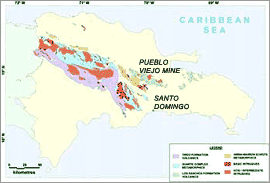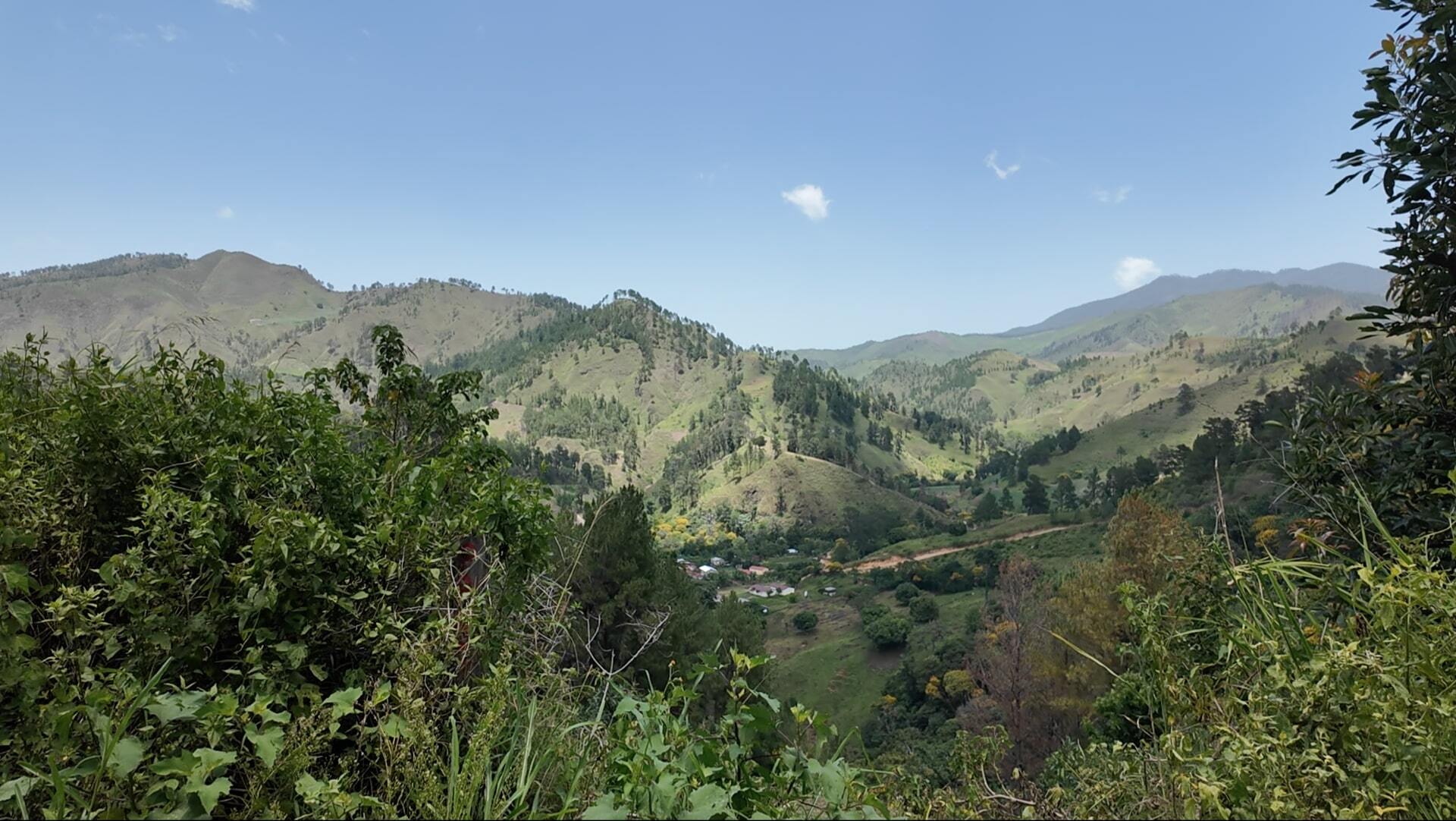Mining in the DR
The history of the Dominican Republic has deep running roots based on the gold and mining industry. Today there is a growing mining and exploration community made up of many explorers and three major mining companies.
- Barrick, with a 60/40% partnership with Newmont, operates the Pueblo Viejo gold mine. A major expansion is underway to convert ~9Moz of Measured and Indicated resources into reserves to extend mine life into 2040 and beyond.
- Americano Nickel produces ferronickel, with a capacity of ~30,000t/year from laterite nickel deposits.
- The Cerro de Maimon Cu-Au-Ag mine is operated by Corporación Minera Dominicana S.A. (CMD), 100% owned by Shenzhen Zhongjin Lingnan Nonfemet.
Geology of the DR
 The island of Hispaniola evolved as a complex island arc associated with bi-polar subduction through Cretaceous to Late Eocene time. Since then, the island has straddled the left-lateral strike-slip fault zone that separates the North American and Caribbean Plates and has largely been volcanically inactive. The Tertiary stratigraphic succession is dominated by sedimentary rocks. The most important rock units in terms of gold and base metal mineralization are the Los Ranchos, Maimon, Tireo and Duarte Formations.
The island of Hispaniola evolved as a complex island arc associated with bi-polar subduction through Cretaceous to Late Eocene time. Since then, the island has straddled the left-lateral strike-slip fault zone that separates the North American and Caribbean Plates and has largely been volcanically inactive. The Tertiary stratigraphic succession is dominated by sedimentary rocks. The most important rock units in terms of gold and base metal mineralization are the Los Ranchos, Maimon, Tireo and Duarte Formations.
Model lead isotope ages and paleontological evidence yield early Cretaceous ages for both the Los Ranchos and Maimon Formations. Together, they constituted a composite arc associated with NW-directed subduction of the proto-Caribbean plate. The Maimon Formation represents a primitive, bimodal fore-arc assemblage composed of tholeiitic basalts and subordinate felsic volcanics and meta-sedimentary rocks whereas the Los Ranchos Formation represents the axial portion of the associated island arc. The Loma Caribe peridotite, which now hosts the nickel laterite mines, and the Duarte Formation amphibolite would have been part of the oceanic crust that floored the proto-Caribbean Sea.
The volcanic arc underwent a change in polarity in Mid-Cretaceous (Aptian to Early Albanian) time, likely triggered by the collision of the Caribbean Oceanic Plateau with Hispaniola. North-vergent obduction of the Loma Caribe peridotite also took place at this time and the arc was tectonically shortened by major thrust faulting. Shearing and metamorphism was stronger in the fore-arc (Maimon) than the island arc (Los Ranchos).
Renewed calc-alkaline arc volcanism began in the Late Cretaceous (Cenomanian), associated with SW-directed subduction of the North Atlantic Plate beneath Hispaniola. This formed the volcanic arc now represented by the Tireo and Duarte Formations of the Central Cordillera.
Calc-alkaline volcanism continued until Middle/Late Eocene time, when the Bahama Platform (North Atlantic Plate) collided with Hispaniola and the island underwent NE-SW contraction. The Loma Caribe peridotite was emplaced over Late Cretaceous basalts of the Peralvillo Formation. Earlier faults and penetrative fabrics were steepened and overprinted by folds and Mid-Cretaceous thrusts were re-activated.
The Maimon Formation is separated from Late Cretaceous basalts (Peralvillo Formation) and the Loma Caribe peridotite by the NW-striking, left-lateral Ozama Shear Zone which is Eocene or younger. From Late Eocene time until the present, Hispaniola has been subjected to left-lateral transpression and left-lateral strike-slip faulting.
